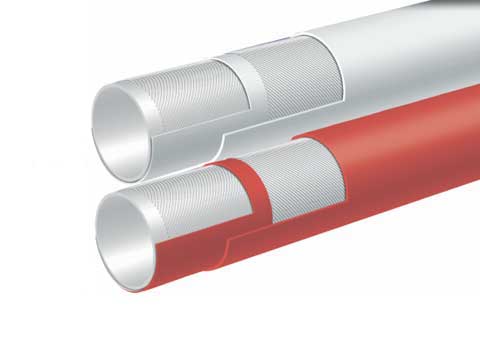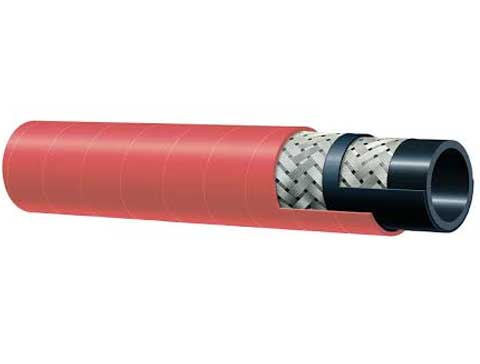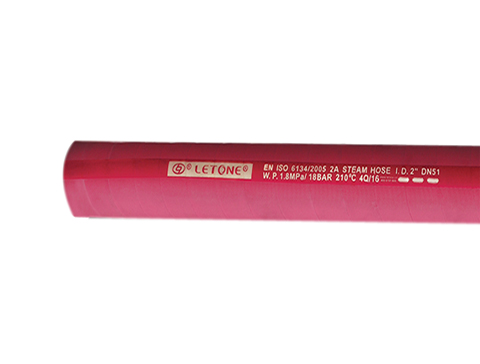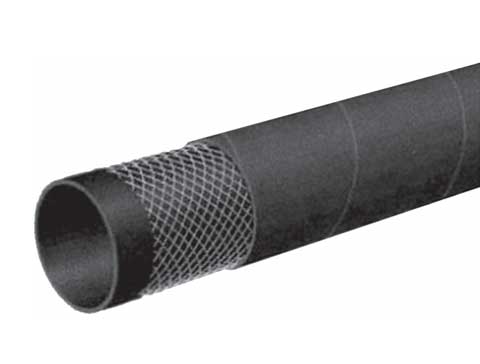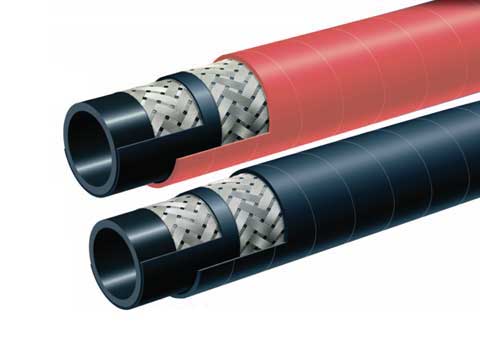UPE (Ultra-High Molecular Weight Polyethylene) industrial hoses are widely used in various industries for the transportation of chemicals, solvents, and other fluids. While UPE hoses offer excellent chemical resistance and durability, they are not immune to problems that can arise during their use. This article aims to highlight some common problems encountered when using UPE industrial hoses and provide insights on how to prevent or address them. By understanding these issues, industrial operators can ensure the safe and efficient operation of their UPE hoses.
 I. Hose Material Degradation
1.1 Chemical Attack
UPE hoses are known for their exceptional chemical resistance. However, prolonged exposure to certain aggressive chemicals can still lead to material degradation. Chemical attack can cause the hose material to weaken, become brittle, or develop cracks, compromising its structural integrity and performance. It is crucial to ensure that the UPE hose selected is compatible with the specific chemicals it will come into contact with. Regularly inspect the hose for signs of discoloration, swelling, or deterioration and replace it immediately if any damage is detected.
1.2 UV Degradation
Exposure to ultraviolet (UV) radiation from sunlight can also degrade UPE hoses over time. UV rays can cause the hose material to become discolored, brittle, or develop surface cracks. To prevent UV degradation, consider using UPE hoses with added UV protection or opt for hose covers that shield the hose from direct sunlight. Regularly inspect the hoses for any signs of UV damage and replace them if necessary.
II. Hose Handling and Installation Issues
2.1 Improper Hose Storage
Improper storage of UPE hoses can lead to premature wear and damage. Hoses should be stored in a clean, dry, and well-ventilated area away from direct sunlight, heat sources, and chemicals. Avoid coiling or bending the hose excessively, as this can cause kinking or deformation. Additionally, ensure that the hoses are stored away from sharp objects or rough surfaces that can potentially puncture or abrade the hose material.
2.2 Incorrect Hose Installation
Improper installation can lead to various problems with UPE hoses. Inadequate clamping or securing of the hose ends can result in leaks or disconnections during operation. Ensure that hose connections are properly fitted, using appropriate fittings and couplings that are compatible with both the hose and the equipment being connected. Follow the manufacturer's guidelines for correct installation procedures, including recommended torque values for tightening fittings. Regularly inspect connections for any signs of leakage and address them promptly.
2.3 Insufficient Bend Radius
UPE hoses have a specified minimum bend radius that should be followed during installation and operation. Bending the hose beyond its recommended bend radius can cause internal damage, resulting in reduced flow, increased pressure drop, and potential hose failure. Always refer to the manufacturer's guidelines for the correct bend radius and avoid exceeding the maximum bending limits. If tight bends are necessary, consider using hose supports or elbow fittings to maintain the required bend radius.
III. Maintenance and Inspection Neglect
3.1 Lack of Regular Inspections
Regular inspections are essential to identify potential issues with UPE hoses before they develop into more significant problems. Neglecting inspections can lead to undetected wear, damage, or degradation, increasing the risk of hose failure during operation. Implement a scheduled inspection program where hoses are visually inspected for signs of wear, abrasion, leakage, or any other damage. Replace any hoses that show signs of deterioration promptly.
3.2 Insufficient Cleaning and Maintenance
Proper cleaning and maintenance are crucial for maximizing the lifespan and performance of UPE hoses. Failure to clean hoses after use can result in the accumulation of residue or chemicals, which can degrade the hose material over time. Follow the manufacturer's recommendations for cleaning procedures and use compatible cleaning agents. Additionally, regularly check hose connections, fittings, and clamps for tightness and address any loose or damaged components promptly. Lubricate moving parts, such as swivel connections, to prevent binding or excessive wear.
3.3 Lack of Training and Education
One often overlooked aspect of hose maintenance is the lack of proper training and education for personnel handling the hoses. Ensure that operators and maintenance staff receive training on proper hose handling, installation, inspection, and maintenance procedures. Educate them about the importance of following manufacturer guidelines and industry best practices to prevent common problems associated with UPE hoses. Well-trained personnel will be better equipped to identify and address potential issues promptly, improving overall hose performance and safety.
Conclusion:
While UPE industrial hoses offer excellent chemical resistance and durability, they can still encounter common problems during their use. Material degradation, handling and installation issues, and maintenance neglect are some of the common challenges faced. By understanding these issues and implementing preventive measures such as selecting the right hose material, proper storage and installation, regular inspections, and appropriate maintenance, operators can minimize the occurrence of problems and ensure the safe and efficient operation of UPE industrial hoses.
I. Hose Material Degradation
1.1 Chemical Attack
UPE hoses are known for their exceptional chemical resistance. However, prolonged exposure to certain aggressive chemicals can still lead to material degradation. Chemical attack can cause the hose material to weaken, become brittle, or develop cracks, compromising its structural integrity and performance. It is crucial to ensure that the UPE hose selected is compatible with the specific chemicals it will come into contact with. Regularly inspect the hose for signs of discoloration, swelling, or deterioration and replace it immediately if any damage is detected.
1.2 UV Degradation
Exposure to ultraviolet (UV) radiation from sunlight can also degrade UPE hoses over time. UV rays can cause the hose material to become discolored, brittle, or develop surface cracks. To prevent UV degradation, consider using UPE hoses with added UV protection or opt for hose covers that shield the hose from direct sunlight. Regularly inspect the hoses for any signs of UV damage and replace them if necessary.
II. Hose Handling and Installation Issues
2.1 Improper Hose Storage
Improper storage of UPE hoses can lead to premature wear and damage. Hoses should be stored in a clean, dry, and well-ventilated area away from direct sunlight, heat sources, and chemicals. Avoid coiling or bending the hose excessively, as this can cause kinking or deformation. Additionally, ensure that the hoses are stored away from sharp objects or rough surfaces that can potentially puncture or abrade the hose material.
2.2 Incorrect Hose Installation
Improper installation can lead to various problems with UPE hoses. Inadequate clamping or securing of the hose ends can result in leaks or disconnections during operation. Ensure that hose connections are properly fitted, using appropriate fittings and couplings that are compatible with both the hose and the equipment being connected. Follow the manufacturer's guidelines for correct installation procedures, including recommended torque values for tightening fittings. Regularly inspect connections for any signs of leakage and address them promptly.
2.3 Insufficient Bend Radius
UPE hoses have a specified minimum bend radius that should be followed during installation and operation. Bending the hose beyond its recommended bend radius can cause internal damage, resulting in reduced flow, increased pressure drop, and potential hose failure. Always refer to the manufacturer's guidelines for the correct bend radius and avoid exceeding the maximum bending limits. If tight bends are necessary, consider using hose supports or elbow fittings to maintain the required bend radius.
III. Maintenance and Inspection Neglect
3.1 Lack of Regular Inspections
Regular inspections are essential to identify potential issues with UPE hoses before they develop into more significant problems. Neglecting inspections can lead to undetected wear, damage, or degradation, increasing the risk of hose failure during operation. Implement a scheduled inspection program where hoses are visually inspected for signs of wear, abrasion, leakage, or any other damage. Replace any hoses that show signs of deterioration promptly.
3.2 Insufficient Cleaning and Maintenance
Proper cleaning and maintenance are crucial for maximizing the lifespan and performance of UPE hoses. Failure to clean hoses after use can result in the accumulation of residue or chemicals, which can degrade the hose material over time. Follow the manufacturer's recommendations for cleaning procedures and use compatible cleaning agents. Additionally, regularly check hose connections, fittings, and clamps for tightness and address any loose or damaged components promptly. Lubricate moving parts, such as swivel connections, to prevent binding or excessive wear.
3.3 Lack of Training and Education
One often overlooked aspect of hose maintenance is the lack of proper training and education for personnel handling the hoses. Ensure that operators and maintenance staff receive training on proper hose handling, installation, inspection, and maintenance procedures. Educate them about the importance of following manufacturer guidelines and industry best practices to prevent common problems associated with UPE hoses. Well-trained personnel will be better equipped to identify and address potential issues promptly, improving overall hose performance and safety.
Conclusion:
While UPE industrial hoses offer excellent chemical resistance and durability, they can still encounter common problems during their use. Material degradation, handling and installation issues, and maintenance neglect are some of the common challenges faced. By understanding these issues and implementing preventive measures such as selecting the right hose material, proper storage and installation, regular inspections, and appropriate maintenance, operators can minimize the occurrence of problems and ensure the safe and efficient operation of UPE industrial hoses.

